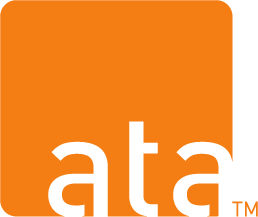Overview
THIS-WIC is particularly interested in telehealth innovations, including replicable interactive tools, technical or other practical solutions that provide effective breastfeeding counseling and/or nutrition education to WIC participants; and interventions that would address common barriers found in rural settings.
THIS-WIC intends to fund at least one award in each of the two priority areas (PA) and anticipates funding up to eight total awards.
Priority Area 1: Implement an existing telehealth solution to ensure timely access to nutritional or breastfeeding support for WIC participants by qualified professionals*
The most consistent benefit documented in telehealth research is when telehealth technology is used for communication and counseling. One option to facilitate this communication is through videoconferencing (delivered either to a single participant or in a group setting). Videoconferencing has been graded as an “A” option by the Agency for Healthcare Research and Quality report. Although videoconferencing has some evidence of feasibility within WIC, to our knowledge, no research has been conducted to assess its impact. WIC SAs may also propose solutions beyond videoconferencing (e.g., two-way text messaging, existing mobile app).
Interventions in this PA may help to facilitate:
- SAs reaching and better serving WIC participants who have historically faced barriers to access, including those in rural locations.
- Integration with and supplementation (not duplication) of WIC services by addressing challenges identified through the participants’ nutrition and/or breastfeeding assessment (i.e., high-risk) or barriers to access.
- Use of assessments and referrals from a WIC Competent Professional Authority to connect participants with appropriate follow-up counseling on complex nutrition and/or breastfeeding problems with qualified professionals. Any counseling contacts should be well documented, and information should be provided in a timely manner to WIC staff to enable follow-up.
*Qualified professionals include Registered Dietitians (RD) and/or breastfeeding experts (i.e., IBCLC) who meet State staffing requirements and can provide expertise in complex nutrition and breastfeeding topics that are in accordance with WIC guidance and with program scope.
Potential Priority Area 1 Research Questions to Consider
Projects addressing PA 1 should seek to understand the impact of implementing an existing telehealth solution such as videoconferencing when added to WIC standard practice for nutrition education and/or breastfeeding counseling.
Proposals should include both intermediate (e.g., attitude towards using the innovation) and impact outcomes (e.g., dietary behaviors) as well as process outcomes (e.g., WIC participant reach or retention).
Proposals should also plan to provide information on implementation costs to the THIS-WIC team so that THIS-WIC can address cost effectiveness-related research questions. Each grantee must agree to provide the THIS-WIC team with data and/or partner with THIS-WIC on evaluation to collect the data necessary to address the research questions relevant to the proposed project.
Examples of research questions include but are not limited to:
- What is the impact of integrating the telehealth solution on:
- WIC participants’ outcomes (i.e., dietary and feeding behaviors, breastfeeding, etc.)?
- Participant reach and retention?
- Provider satisfaction? Participant satisfaction?
- What is the feasibility, accessibility and acceptability of using this solution to engage with WIC participants? Among WIC staff? Among WIC participants?
- What is the cost, with respect to both the provider (i.e., State Agency) and the WIC participant, to deliver the telehealth solution?
- What are the costs for the WIC program associated with adoption (initial start-up), implementation (on-going administration), and sustainability?
- What factors influence WIC staff delivery of the telehealth solution (i.e., WIC staff interest, telecommunication challenges faced, acceptance of method for delivery of education)?
Priority Area 2: Develop and implement an online (mobile-friendly) resource or tool to provide nutritional or breastfeeding support to WIC participants that is within the scope of the nutrition education and/or breastfeeding support offered in the WIC clinic by qualified professionals*
The focus of PA 2 is the development of online, mobile-friendly telehealth technologies and/or tools or novel integration of existing tools to support WIC staff in their delivery of WIC services. Projects awarded for PA 2 will help generate an emerging evidence base to better understand the integration of mobile-friendly tools within WIC to supplement usual practice care, while also addressing program barriers for SAs and WIC participants.
Development and implementation of online, mobile-friendly resources or tools may help to facilitate:
- Productive and meaningful interactions with participants through provision of information on common nutrition topics of interest, suggested prompts, talking points, or actionable takeaway messages.
- Improved engagement with WIC participants that includes participant-centered nutrition education practices, including goal setting.
- Delivery of nutrition education content relevant to identified nutrition risk(s) and common participant concerns.
- Use of evidence-based strategies to maximize participant engagement or impact on participant nutrition behaviors
- Use of evidence-based best practices for the delivery and reinforcement of nutrition messages.
- Inclusion of features to enable WIC staff to analyze assessments and monitor use of the tool and its impact on participant dietary habits and/or health to support continual improvement.
- Tailoring information to the nutritional and/or breastfeeding needs of participant, care plan development, documentation and appropriate follow-up.
- Use of referrals and assessment from a WIC Competent Professional Authority to connect participants with appropriate follow-up on complex nutrition and/or breastfeeding problems.
*Qualified professionals include Registered Dietitians (RD) and/or breastfeeding experts (i.e., IBCLC) who meet State staffing requirements and can provide expertise in complex nutrition and breastfeeding topics that are in accordance with WIC guidance and with program scope.
Potential Priority Area 2 Research Questions to Consider
We anticipate that projects addressing PA 2 will seek to understand how integration of mobile-friendly telehealth technologies and/or tools used by WIC staff may be used to supplement usual care, and support improved participant reach and retention. Contacts made through the new technology or tool should integrate with and not duplicate WIC services by addressing challenges identified through the participants’ nutrition and/or breastfeeding assessment (i.e., high-risk) or barriers to access.
As with PA 1, proposals should include both intermediate (e.g., attitude towards using the innovation) and impact outcomes (e.g., dietary behaviors) as well as process outcomes (e.g., WIC participant reach or retention). Proposals should also plan to provide information on implementation costs to the THIS-WIC team so that THIS-WIC can address cost effectiveness-related research questions. Each grantee must agree to provide the THIS-WIC team with data and/or partner with THIS-WIC on evaluation to collect the data necessary to address the research questions relevant to the proposed project.
Examples of research questions include but are not limited to:
- What are WIC participant and staff perceptions regarding this new resource or tool?
- Does the tool facilitate productive and meaningful discussions between WIC staff and participants, including by supporting participant-centered nutrition education practices?
- What is the accuracy and reliability of this tool?
- What is the feasibility, accessibility and acceptability of using this tool to engage with WIC participants? Among WIC staff? Among WIC participants?
- What are the costs associated with implementation and utilization of the new system (initial capital investment, ongoing costs)?
- What is the impact of the tool on participant reach and retention?






